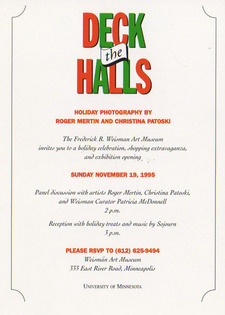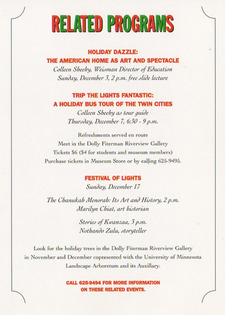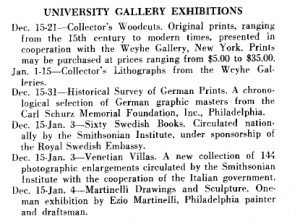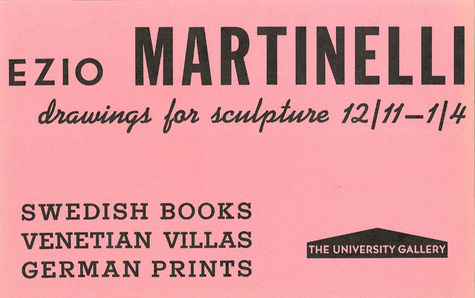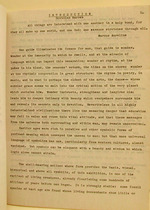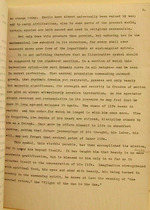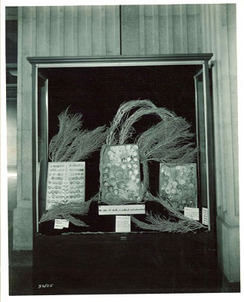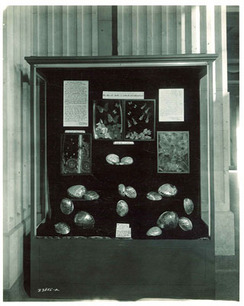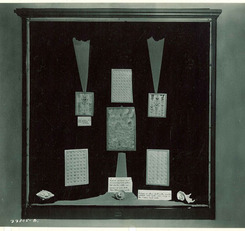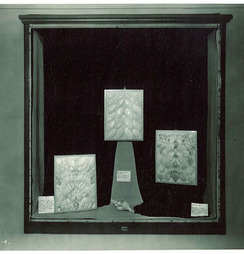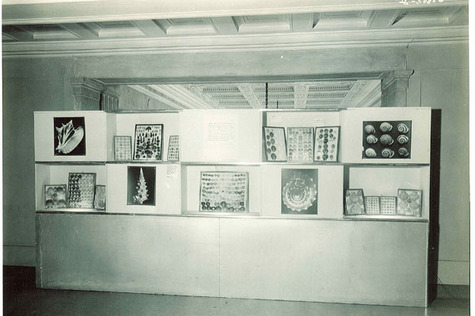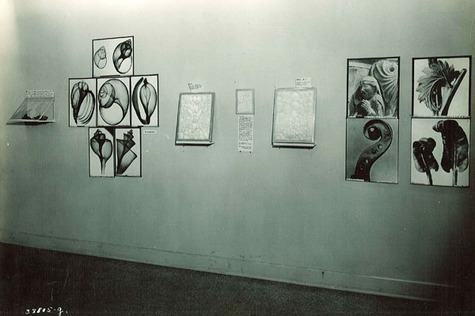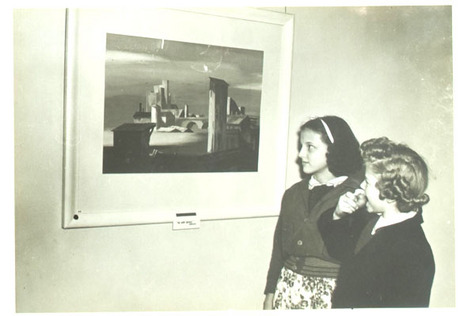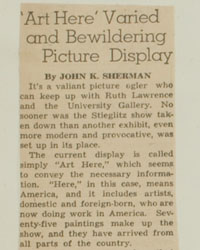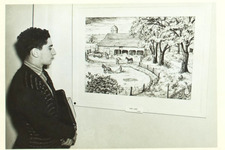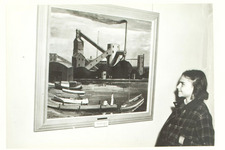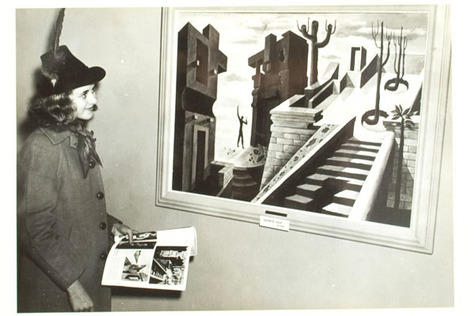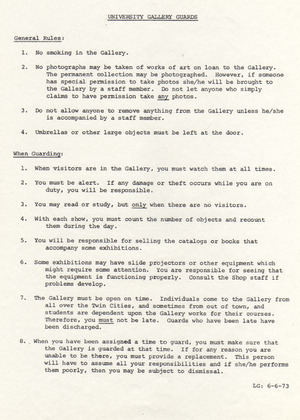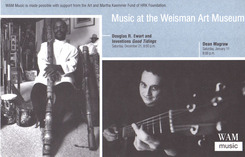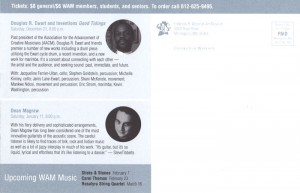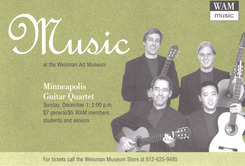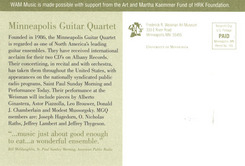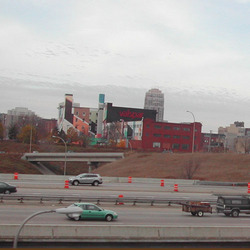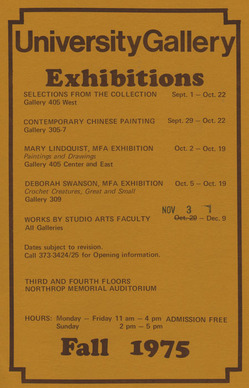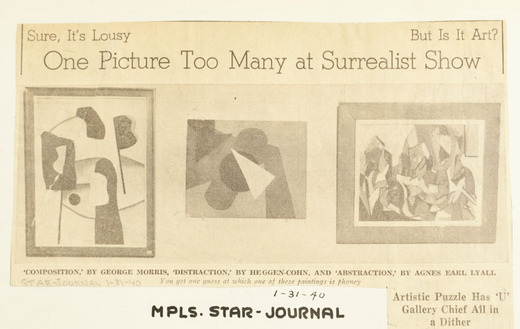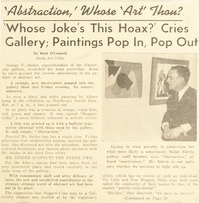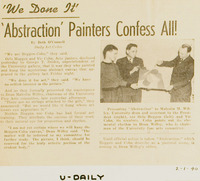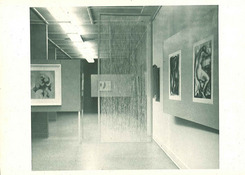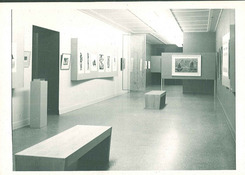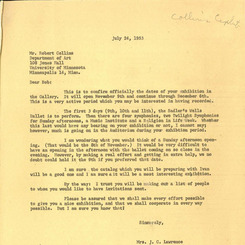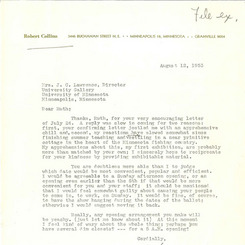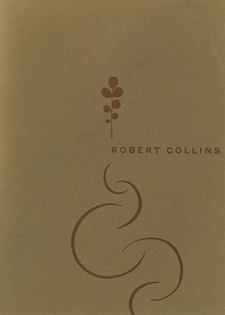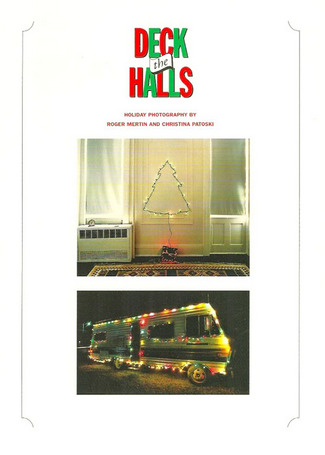 From November 19, 1995-March 3, 1996, WAM exhibited, “Deck the Halls: Holiday Photography by Roger Mertin and Christina Patoski.” As, “the most… wonderful time…. Of the year…” has again approached and passed us, it is an apt time to look back at this exhibit which brings into focus the celebrations and pastimes that surround the holiday season.
From November 19, 1995-March 3, 1996, WAM exhibited, “Deck the Halls: Holiday Photography by Roger Mertin and Christina Patoski.” As, “the most… wonderful time…. Of the year…” has again approached and passed us, it is an apt time to look back at this exhibit which brings into focus the celebrations and pastimes that surround the holiday season.
In the exhibit catalogue, former WAM curator Patricia McDonnell described,
“Christmas in late twentieth-century America is a pervasive cultural phenomenon, and for many it entails a round of rituals that are removed from a specific religious context. Given the importance in our culture of this winter observance, it represents prime territory for the artist interested in cultural meaning, its development, and ways of representation.”
Through the exhibition of the holiday-focused photographs of Roger Mertin and Christina Patoski, we can look at seasonal cultural offerings in different contexts.
An invitation to the exhibition opening and a listing of related programs provides further insight into the discussion of cultural considerations of the winter season:
Former WAM Director of Education Colleen Sheehy described the exhibit,
“The artists’ accumulation of images, taken in far-flung locales over a number of years, builds a composite picture of the country’s holiday folk customs. That larger picture reveals how Americans use objects in an artfulness of everyday life, creating domestic spaces in which ornament, architecture, and landscape are carefully designed and then enhanced through the use of lighting.“
As I returned home for a holiday celebration with family this past weekend I thought of this exhibit. I gave special attention to how my mother used objects in “the artfulness of everyday life” to design our home with holiday décor.
After participating in a secular family viewing of “Home Alone” whilst enjoying a piece of lefsa lightly dusted with brown sugar, I realized just how, “Fast away the old year passes…”
“Hail the new, ye lads and lasses!”
Fa la la la la, la la la la.
